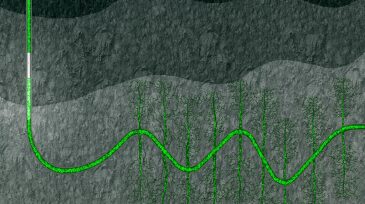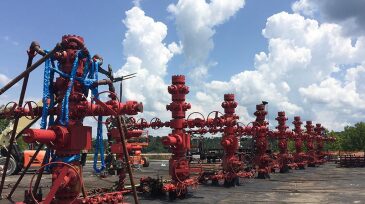Sponsored Content
-
SponsoredIn oil and gas operations, every decision counts. For more than 2 decades, SiteCom has been the trusted digital backbone for well operations worldwide, driving insight, collaboration, and efficiency.
-
SponsoredAdvance your career with the new Pipeline Engineering Program at the Technical University of Leoben, a 5-month course combining on-campus and online learning, integrating industry expertise, engineering practice, and future-ready skills for professionals in oil, gas, and emerging energy systems.
-
SponsoredSince 1997, intelligent completions have transformed reservoir management, but adoption remains limited due to perceived complexity. The industry reached a pivotal moment with the development of next-generation technologies that address longstanding challenges and offer simpler operation solutions.
-
SponsoredKongsberg Digital’s mobile companion to the SiteCom platform is designed to keep wellsite insight close at hand, wherever the job takes you.
-
SponsoredAltitude Energy Partners optimized drilling efficiency by minimizing dysfunctions and protecting downhole components. Their directional drilling team ensured consistent curves and laterals through precise BHA design, modeling, and trajectory control—reducing nonproductive time and drilling costs, and achieving a 100% improvement in efficiency by pad completion.
-
SponsoredAs operators strive to increase production under tighter budgets, traditional downhole diagnostics are falling short—too costly, complex, and time-consuming. Seismos Acoustic Friction Analysis (SAFA) offers a smarter, surface-based alternative. This white paper explores how SAFA enables real-time treatment optimization, better fracture performance, and substantial cos…
-
SponsoredLiquid loading is declining the production rates and limiting the ultimate recovery of shale gas wells. This article explains how subsurface compression can remove liquids from the horizontal and vertical wellbores and increase one operator’s production by 67%.
-
SponsoredRunning casing to depth in long lateral sections is challenging, often costing operators a significant portion of pay zone at the toe of the well. This article highlights a technology that helped one operator add $120,000 to its incremental gas recovery.
-
SponsoredMany oilfield applications involve use of slurries. But sedimentation of the additives that started out as powders can create problems and reduce effectiveness. A new easy to use, liquid polymer additive from BYK is the solution you need.
-
SponsoredIn oil and gas offices around the globe, the term digitalization prompts a range of responses. This white paper outlines a pragmatic approach to digitalization for oil and gas operators, with a focus on drilling and completion.
-
SponsoredParaffins present in crude oil can gel or precipitate, which can cause pipeline and production system blockages. Dow’s ACCENT wax inhibitors are high-active, aqueous-based chemistry, that efficiently control paraffin deposition in pipelines.
-
SponsoredWell delivery scheduling is a complex and critical process, with substantial economic impact. It is often done manually using unsophisticated software tools. Actenum Upstream software overcomes the limitations of manual scheduling and is designed for operators and complex operations.
-
SponsoredMesser and Nissan Chemical recently introduced a new Huff ’n’ Puff process that combines CO2 or N2 gas and nanoparticles for synergistic multi-spectrum recovery enhancement from aging, depleted wells.
-
SponsoredFlow assurance provides value throughout the entire oil and gas production value chain. Ensuring an uninterrupted flow of hydrocarbon fluids from the reservoir to delivery is key for your operation and profitability.
-
SponsoredNew extreme environment ultracapacitor technology will allow directional drillers to eliminate lithium from their entire supply chain. These advanced ultracapacitors can be coupled with downhole turbine generators to provide reliable downhole power without the need for lithium.
-
SponsoredWhat does it take to succeed in the new energy ecosystem? In this short video, experts including Charles McConnell, former US Assistant Secretary of Energy and Preben Strøm, Managing Director Subsea Valley share their views on why innovation and collaboration are critical. Watch it now.
















